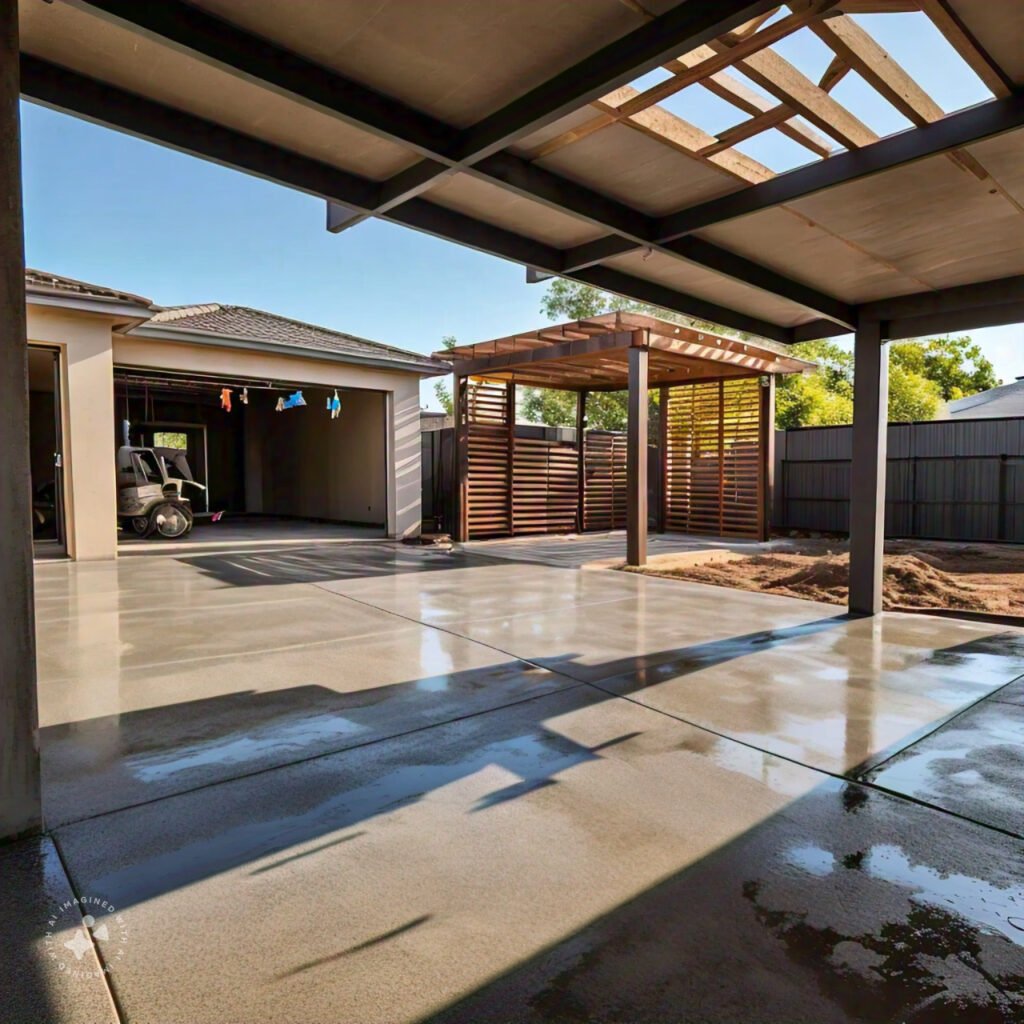Construction costs have been on an upward trajectory, impacting homeowners planning new builds or renovations. Understanding how to manage these rising expenses, particularly within concrete construction, is essential to stay within budget and maintain quality. This guide offers technical strategies to mitigate cost increases, optimize resource allocation, and ensure durable, efficient outcomes for your home project in 2025.
Innovative Material Sourcing and Cost Control in Concrete Construction
At a bustling concrete construction site during daylight, engineers closely review detailed blueprints, discussing strategies to optimize raw material selection while controlling costs. The site showcases reinforced concrete structures rising methodically, highlighting the integration of sustainable materials such as recycled aggregates and eco-friendly admixtures. These innovations are crucial in mitigating the impact of rising prices in 2025.
Engineers evaluate various raw material options, emphasizing the importance of sourcing locally to reduce transportation costs and support community economies. They inspect samples of concrete mixes containing recycled glass, fly ash, and other industrial byproducts, illustrating a shift towards more sustainable construction practices. This approach not only lowers material costs but also contributes to environmental conservation.
In the organized construction yard, multiple raw material bins are systematically labeled, allowing for quick comparison between traditional and alternative cost-effective options. The site workstation features digital tablets where project managers track inventory levels, costs, and supplier details, ensuring real-time data-driven decision-making.
Selecting raw materials with a focus on durability and sustainability is vital, especially in concrete projects where long-term performance influences overall costs. Engineers are seen discussing the benefits of using fiber-reinforced concrete, which can reduce the need for additional reinforcement and improve structural resilience. This method helps maintain quality while adhering to budget constraints.
Furthermore, innovative procurement strategies are employed. Bulk purchasing agreements with local suppliers secure better rates, while flexible delivery schedules prevent excess inventory expenses. Such practices optimize cash flow and reduce wastage, fostering a lean construction process.
Effective material sourcing also involves partnership with suppliers committed to sustainable practices, ensuring consistent quality and cost stability. Regular quality assessments of raw materials reduce the risk of defects that could lead to costly rework later. The site team benefits from these meticulous selections, ensuring that each batch of concrete meets both environmental standards and project specifications.
For homeowners and project managers looking to navigate the complexities of rising costs, integrating these sourcing strategies can be transformative. By prioritizing local, recycled, and durable materials, and leveraging technology for procurement management, projects can stay within budget without sacrificing quality. For more insights on how to implement sustainable concrete solutions, visit this resource. Mastering material sourcing is a pivotal step towards cost-effective and sustainable home-building in 2025.
Optimizing Construction Workflow and Budget Management Techniques

Managing rising construction costs in 2025 requires homeowners and project managers to implement efficient workflow strategies and robust budget oversight. At a bustling concrete construction site during daylight, a construction manager stands amidst activity, utilizing digital project management tools on a tablet to streamline operations. This image captures the critical role of technology in ensuring project transparency, real-time updates, and precise tracking of resources, all essential for cost control.
In large-scale concrete projects, especially during phases like pouring, setting, and curing, unexpected delays or miscommunications can escalate expenses quickly. Digital tools enable managers to coordinate work seamlessly, monitor progress, and quickly adapt schedules to avoid costly overruns. For example, real-time monitoring of concrete curing times helps prevent rushed or repeated pours, minimizing material waste.
Effective workflow management begins with detailed planning. Using digital project management platforms allows for precise scheduling, resource allocation, and task prioritization. This data-driven approach ensures that workers pouring concrete, setting forms, and curing are synchronized, reducing downtime and idle labor hours. It also offers the ability to flag potential bottlenecks before they impact the budget, providing an opportunity for proactive adjustments.
Budget oversight hinges on meticulous tracking of expenses and resource usage. Modern digital tools facilitate instant recording of material costs, labor hours, and equipment rentals directly from the site. This data empowers project managers to identify cost spikes early and make informed decisions, such as sourcing alternative materials or adjusting project timelines to mitigate price fluctuations.
Optimization also involves maintaining a flexible yet controlled supply chain. Digital platforms help track raw material inventories, coordinate deliveries, and communicate with suppliers efficiently. This minimizes delays due to shortages or delivery errors, saving money and keeping the project on schedule.
In concrete construction, where material prices can be highly volatile, leveraging technology for workflow and budget management becomes especially vital. When integrated effectively, these tools can help reduce waste, avoid costly rework, and ensure a smoother construction process overall. For homeowners, adopting these digital techniques not only provides greater visibility into project progress but also enhances control over costs, making home building projects more predictable despite the ongoing price increases.
For those seeking further insights into managing concrete construction costs and workflows, additional resources are available, such as detailed guides on construction management or local contractor experiences. Exploring regional building practices, like those in Houston or surrounding areas, can also offer tailored strategies to combat specific regional price trends and logistical challenges, ensuring your project stays within budget despite market fluctuations.
Proactively managing rising construction costs requires strategic planning within concrete construction. By sourcing materials efficiently and refining workflow processes, homeowners can achieve durable, high-quality results without exceeding their budgets. Staying informed on industry innovations and maintaining close project oversight will ensure your home project remains financially viable and structurally sound in 2025 and beyond.
Partner with us for expert concrete construction that maximizes durability and value.
Learn more: https://ccsconcretedriveways.com/#quote
About us
At Cross Construction Services, we specialize in creating durable, aesthetically pleasing driveways that not only enhance the curb appeal of your home but also add significant value to your property. With over three decades of experience in the construction industry, our team in Houston, Texas, is committed to delivering top-quality craftsmanship and unparalleled customer service.


